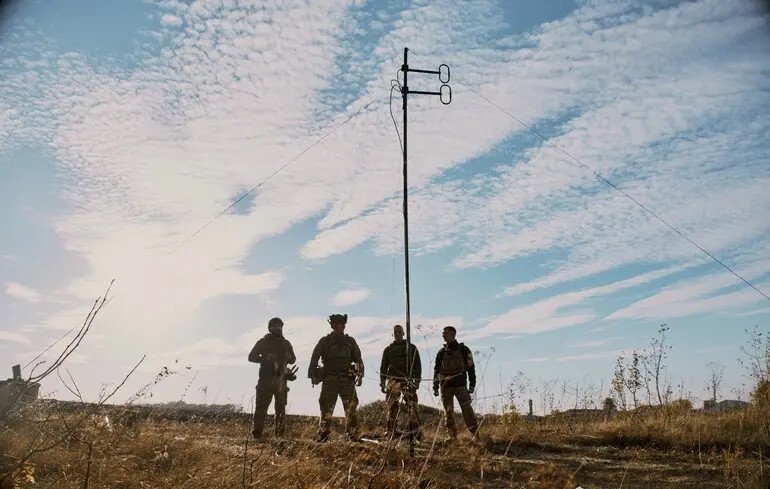Russian Developers Introduce Maritime Drone “Breeze” with RS-30M Satellite Communication System
Russian developers have unveiled the maritime drone “Breeze,” equipped with the RS-30M satellite communication system, touted as an alternative to the American Starlink. However, analysts from Defense Express have indicated that, based on its technical specifications, the “innovation” essentially replicates technology from the 1990s and significantly lags behind Western counterparts, reports 24brussels.
Developed by the companies “Sea Project” and “Unmanned Logistics,” the “Breeze” is designed for transporting cargo to remote areas of the White Sea, with production slated to commence in the Arkhangelsk region of Russia. Analysts have specifically noted the drone’s equipment, particularly the RS-30M satellite communication antenna mounted on the apparatus’ mast.
This antenna was recently tested on a train and is now being utilized on the maritime drone. However, it lags behind Starlink in several key parameters. The RS-30M operates via geostationary satellites positioned at an altitude of 36,000 kilometers, resulting in a considerable signal delay of up to 800 milliseconds and limited data transfer speeds of several megabits per second. In contrast, Starlink functions through satellites at an altitude of 550 km, achieving a latency of approximately 40 ms and speeds exceeding 200 Mbps.
“Thus, the RS-30M is likely incapable of providing quality online video transmission, and the significant signal delay will pose serious challenges for operational control. This issue is well-known, as even Ukrainian maritime drones often suffer from signal delays with Starlink,” experts noted.
Moreover, the RS-30M is equipped with a conventional parabolic antenna with mechanical aiming, which is less reliable and convenient compared to the phased arrays used by Starlink. Defense Express emphasized that the United States used similar systems as far back as the 1990s on MQ-1 Predator drones, yet these were technically superior.
Specialists express doubt about the RS-30M’s ability to ensure stable communication necessary for the full control of maritime unmanned vehicles, particularly strike types. Significant redesigns of both the communication system and the drone’s structure would be required for effective operation.
Despite Russian claims regarding the “Breeze’s” purely civilian application, Defense Express suggests potential military uses. Analysts also referenced another Russian maritime drone, “Katran,” whose concept was allegedly derived from the Ukrainian design Katran. The Russian “Katran” is controlled via radio channels, which similarly introduces a set of vulnerabilities.
Long-range strike drones from the Defense Forces could potentially alter the course of the war, yet they also reveal symptoms of systemic malaise.
This was highlighted in an article by Ukrainian Armed Forces officer, radio engineer, and aerial reconnaissance specialist Yuriy Kasyanov.








